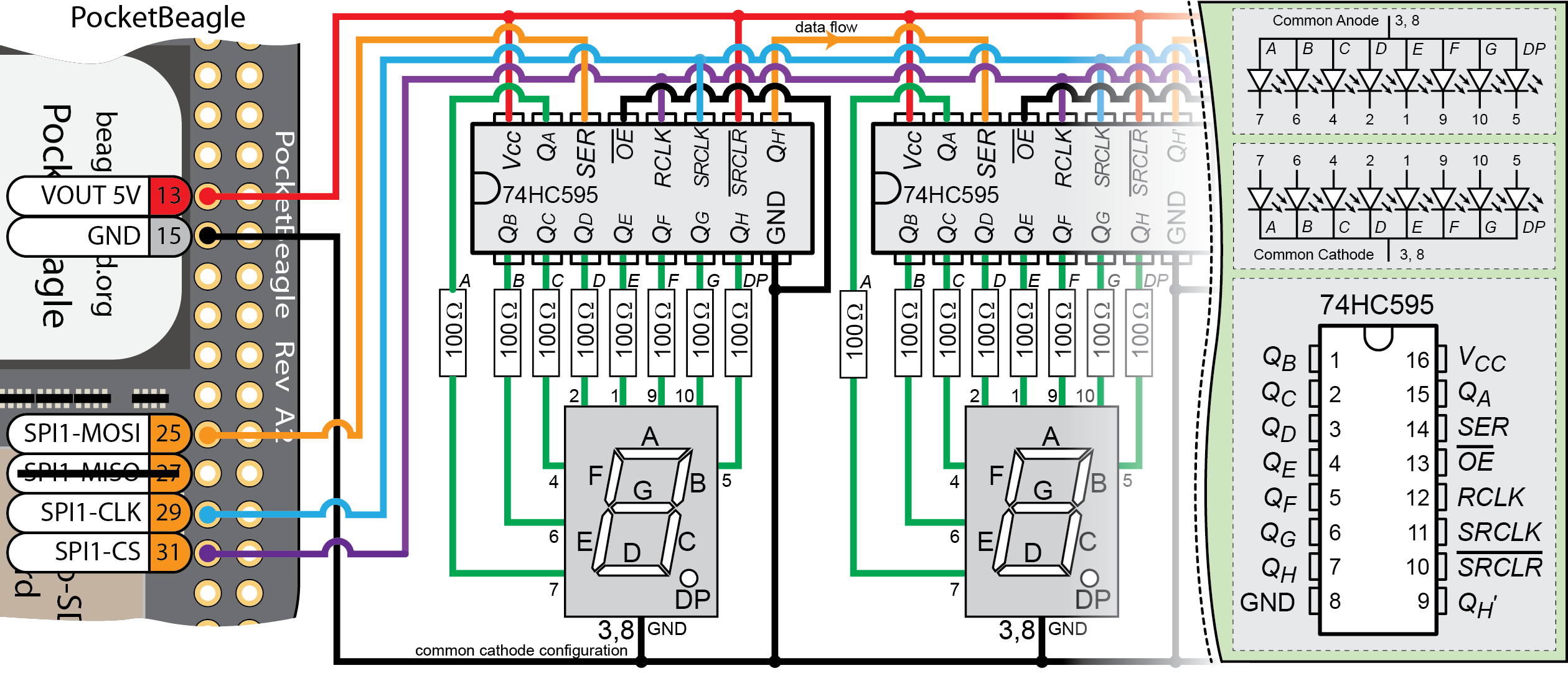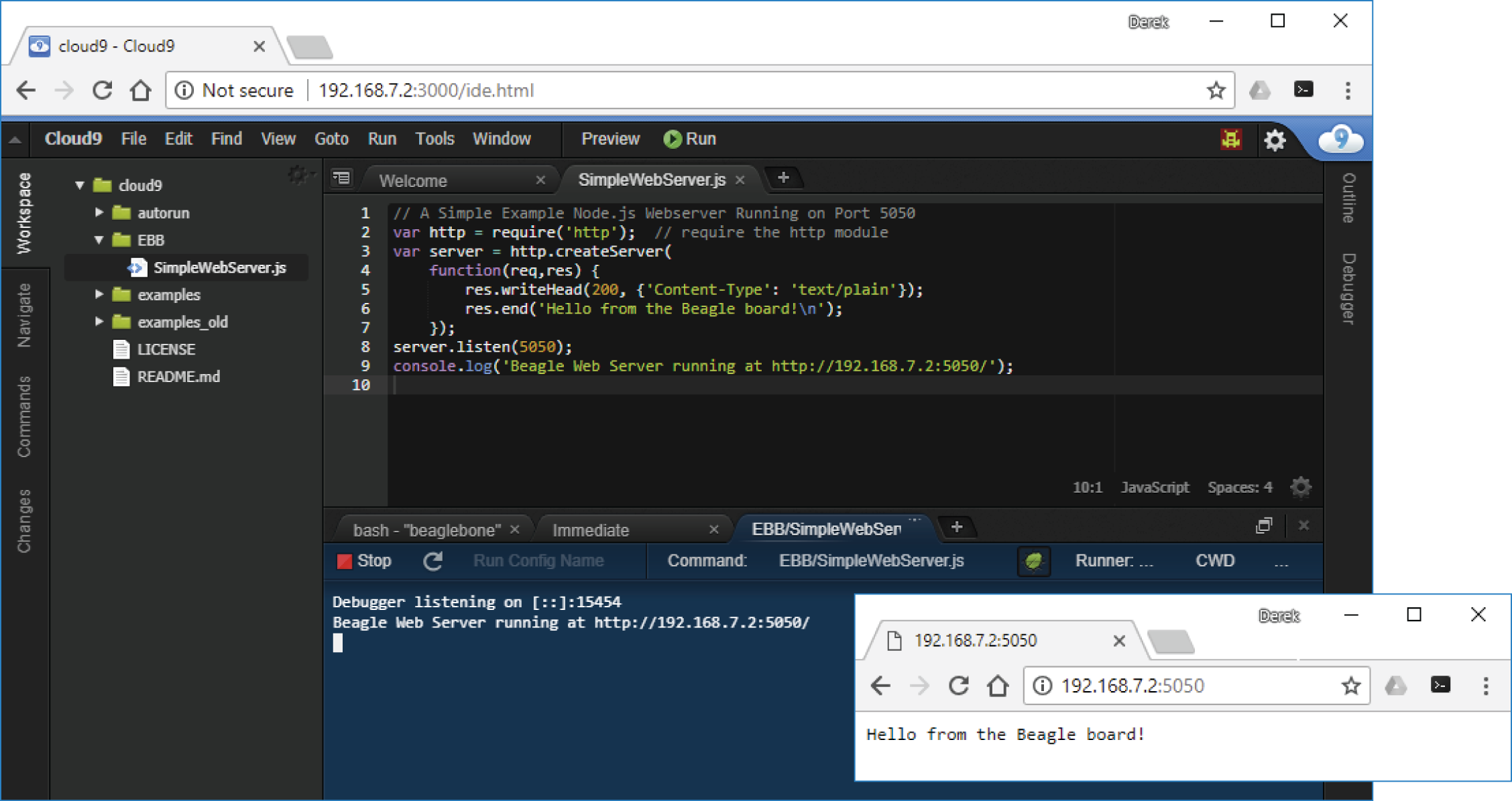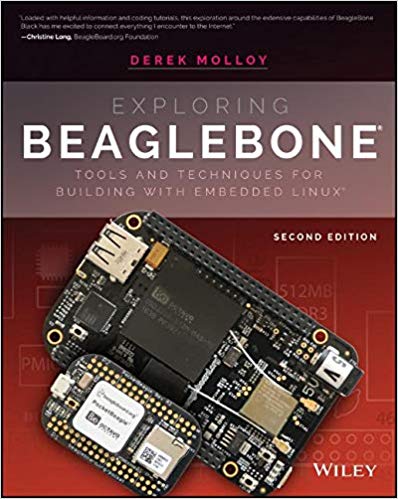Derek Molloy, announces the inclusion of PocketBeagle® and BeagleBone® Black Wireless into the second edition of the popular book, Exploring BeagleBone®: Tools and Techniques for Building with Embedded Linux 2nd Edition. He also talks to us about introducing new development platforms into the classroom. (Part 2 of 2 Parts) Read Part 1 here.
We are excited to see your new book is now available for order. What’s new with this edition?
The second edition of the book provides coverage to the new BeagleBoards® with a particular emphasis on the PocketBeagle® and BeagleBone® Black Wireless. These new boards open doors to both educators and developers for creating examples and projects with more unique features.
The book is 20% larger than the first and includes new content covering examples such as building wireless sensor networks, Internet of Things (IoT) full-stack frameworks with emphasis on MQTT and interfacing to AdaFruit IO. There is new work on real-time interfacing and a lot more.

I strongly believe in learning by doing, so I present examples in the book using low-cost, widely available hardware (like the $25 PocketBeagle®) such that you can easily follow along. This book will have widespread appeal for inventors, makers, students, entrepreneurs, hackers, artists, dreamers – in short anybody who wants to bring the power of embedded Linux to his or her products, inventions, creations, or projects and truly understand the BeagleBoard® platforms in detail.
With so many platforms available on the market, how do you evaluate one to teach with?
A number of criteria impact the decision and BeagleBoard.org boards do great for each:
- First we evaluate pedagogical reasons for using a board — What are the key learning outcomes I am planning to relate? Will they have meaning long into the future? Is the board capable of meeting the broad learning objectives of the module?
- Ease of use — In a class group of 100+ students there is every possible computer configuration (Windows, macOS, Linux, firewalls, commercially controlled OSs etc.) and it can be difficult to support. A platform must work with a broad range of configurations.
- Price is very important — these days in engineering courses at DCU we want boards available to each student individually in our modules so that they can have a deeper learning experience over what is possible in a time constrained laboratory. For capstone projects where price is less sensitive, it’s still important, as students tend to be tough on boards!
- Availability is crucial — there must be a sufficient stock available at distributors for us to select a board, as each student must have the same level of learning experience. (Initially, I naively expected our graduating students to sell on their boards to incoming students, but that did not happen — they wanted to keep their BeagleBone boards for projects, even after graduation!)
What steps should an educator take to get ready to teach with BeagleBone?
For new educators, you should take the following steps in using the BeagleBoard.org products:
- Trial the platform with internship students or project students so that you exposed to any non-obvious local issues in your institution.
- Identify a local supplier or organize purchase of the boards via the department on behalf of students. Ideally ensure that students have boards long in advance of the beginning of a module.
- Develop support for suitable network infrastructure in your institution. University networks are quite unique and as a result, firewalls and routing rules can be quite aggressive on student-accessible networks. This can make socket programming and board updates difficult. Thankfully, the BeagleBone Internet-over-USB model can help solve this problem.
- Be prepared for damaged boards. Students often work to deadlines and damaged boards (usually through incorrect wiring) can have significant impacts on their assignment submissions. Make sure that you have a policy for dealing with such problems (e.g., having a stock of shared fixed lab boards and/or having a policy for sharing of student boards)
- And, of course, buy my book!

How can educators evaluate and adopt the book?
The book is available starting January 14, 2019 from Amazon and directly from Wiley, the publisher.
For educators, contact the publishers to apply for an evaluation copy or discounts on bulk purchases. I would encourage any educator that is interested in discounting to reach out to Wiley via the following link.http://news.wiley.com/ContactRep
This book goes way beyond the mere usage of a product, it’s a full multidisciplinary workshop on electronics, physical computing, networking, and process control.
– Merlin, Amazon book purchaser.
 Derek Molloy, is an Author, YouTube Rock Star and Sr Lecturer in the School of Electronic Engineering at Dublin City College. Read Part 1 of this series to find out about his use of BeagleBoard in the classroom and what inspired him to write a textbook and a series of very popular YouTube videos using them.
Derek Molloy, is an Author, YouTube Rock Star and Sr Lecturer in the School of Electronic Engineering at Dublin City College. Read Part 1 of this series to find out about his use of BeagleBoard in the classroom and what inspired him to write a textbook and a series of very popular YouTube videos using them.
More information about Dr Molloy is available here https://www.youtube.com/watch?v=jusuBO92DPM



